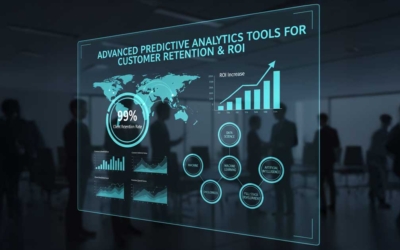Key Takeaways
- Nearshore robotics enhances operational efficiency by relocating manufacturing closer to companies, reducing transportation costs and improving communication.
- Technological advancements, particularly in AI and machine learning, are key drivers of nearshore robotics adoption, enabling better automation and data-driven decisions.
- The future outlook for nearshore robotics suggests significant growth, with mainstream adoption expected by 2024, enhancing productivity and transforming supply chain strategies.
Defining nearshore robotics
Nearshore robotics involves relocating manufacturing and operational processes closer to a company’s base, typically within the same region, as opposed to offshoring to distant countries. This geographical closeness isn’t solely about cutting travel time or transportation costs; it enhances communication and collaboration, often challenging in offshore setups.
Nearshoring offers operational advantages, such as cost reduction and access to specialized talent pools in nearby regions. Shorter distances lead to reduced transportation costs and improved quality control, facilitating quicker responses to market changes. Working with nearby service providers offers cultural compatibility and synchronized time zones, boosting operational efficiency.
Key drivers of nearshore robotics adoption
Technological advancements drive the nearshore robotics movement. As automation and robotics evolve, they become more feasible and competitive for nearshoring. Technological progress enables small and medium enterprises to access and benefit from nearshore robotics as costs decrease and technology becomes user-friendly.
Financial incentives also drive this trend. Nearby suppliers often offer competitive labor costs and quicker delivery times, making nearshoring attractive for manufacturers. The adoption of digital supply chain control towers and digital twin technologies enhances visibility and predictive capabilities, enabling data-driven decisions.
The growing demand for skilled labor in advanced manufacturing, especially in automation and data analysis, is another driver. New training programs and educational initiatives are emerging to meet industry demands. A skilled workforce is crucial for the widespread adoption of nearshore robotics, leveraging the full potential of advanced technologies, including human labor, and the expertise of skilled professionals.
Emerging technologies in nearshore robotics
Artificial intelligence (AI) and machine learning lead the emerging technologies in nearshore robotics. These technologies optimize manufacturing processes, boosting operational efficiency and reducing waste. Machine learning-powered adaptive robotic systems handle complex manufacturing tasks, making them indispensable in modern production environments.
Digital twin technology, a game-changer, enables remote monitoring and real-time data analysis to enhance operational efficiency. Advanced robots with sensors and connectivity features integrate with the Internet of Things (IoT), boosting automation capabilities. These digital solutions are vital for effective nearshoring, providing real-time data and supporting robust supplier relationships.
The convergence of these technologies is necessary for companies to stay competitive in a rapidly evolving market. Leveraging AI, IoT, and digital twins allows businesses to create a resilient and efficient operational environment, minimizing downtime and maximizing productivity through enhanced computing power.
Current trends shaping nearshore robotics
Recent years have seen a significant shift towards automation and robotics in nearshoring to offset higher regional labor costs. This trend is driven by the need for efficient and cost-effective production processes. AI and IoT integration in logistics (AIoT) empowers companies to gather real-time data, identify patterns, and make quick, informed decisions.
In 2024, AI’s role in supply chains will focus on faster data processing and pattern identification, improving overall efficiency. Sharing data about critical components enables companies to respond proactively to shortages, enhancing supply chain resilience. These trends are shaping the future of nearshore robotics, making it a pivotal component in modern supply chain strategies.
Quick adaptation to market changes and effective risk management are becoming increasingly important. Leveraging the latest trends in digital technologies and automation, businesses can create a resilient and responsive supply chain, navigating today’s global market complexities.
The role of artificial intelligence in nearshore robotics
Artificial intelligence (AI) revolutionizes nearshore robotics by enhancing operational efficiency and decision-making capabilities. AI’s contribution to hyperautomation enables businesses to automate a wider range of processes beyond simple, structured tasks. This transformation is evident in outsourcing, where AI and machine learning facilitate smarter, data-driven decisions and automate complex processes.
The combination of AI and Robotic Process Automation (RPA) enables machines to process unstructured data, enhancing their capacity to automate complex tasks. AI-powered bots can interpret free-form text like customer inquiries, allowing employees to focus on strategic activities. This shift boosts productivity and improves overall manufacturing efficiency.
AI-powered real-time collaboration tools bridge communication gaps between onshore and offshore teams. These tools facilitate seamless interaction and coordination, ensuring team alignment towards common goals. Integrating AI into nearshore robotics is a game-changer, driving innovation and efficiency across industries.
Supply chain strategies and nearshore robotics
Nearshore robotics transforms supply chain strategies by enhancing operational efficiency and visibility. Companies can reduce risks by diversifying supply chains and minimizing reliance on distant manufacturing sites. This shift is evident in the trend of moving production closer to end markets, reducing delays and enhancing risk management.
The rise of multi-vendor outsourcing allows companies to access diverse expertise and minimize risks of relying on a single provider. Cloud-based outsourcing is gaining traction, offering businesses greater flexibility and security in operations management. These strategies are crucial for maintaining a resilient and efficient supply chain in today’s dynamic market.
U.S. manufacturers increasingly nearshore to regions like Mexico and Central America to enhance supply chain risk management. This trend underscores the importance of geographical proximity and cultural compatibility in modern supply chain strategies. Leveraging nearshore robotics, companies can create an agile and responsive supply chain, adapting to changing market conditions.
Challenges and potential risks
Integrating robotics into existing systems can be costly and time-intensive. Businesses often struggle with standardizing disparate systems, complicating the effective implementation of robotics. Additionally, a shortage of in-house expertise for implementing robotic process automation creates a significant barrier to adoption.
Companies also worry about potential threats to company culture and customer experience. The shift towards automation and robotics can affect the human element of business interactions, critical for maintaining strong customer relationships. Security issues related to data access and integrity are prominent worries for organizations considering automation.
To mitigate risks, companies must:
- Develop robust security measures
- Implement training programs to build necessary expertise
- Maintain high service levels
- Ensure seamless integration of robotics into existing processes
By proactively addressing these challenges, businesses can create a more resilient and efficient operational environment to remain competitive.
Future outlook: Nearshore robotics in the next three years
The future of nearshore robotics looks promising, with significant growth projected by 2025. Advancements in technology and increased automation needs drive this growth, making nearshore robotics integral to modern supply chain strategies. Mainstream adoption of robotics in distribution centers and warehouses is expected in 2024, highlighting the growing importance of this technology.
An increase in Robotics-as-a-Service is anticipated as warehouses explore the benefits or meet throughput needs. Robots will increasingly perform repetitive tasks like case picking and palletizing, allowing human workers to focus on complex and strategic activities. This shift will enhance operational efficiency and improve overall productivity in various industries.
Over the next three years, the integration of nearshore robotics will continue to evolve, driving innovation and efficiency across supply chains. Companies that embrace these advancements will be well-positioned to navigate modern market complexities and achieve sustained growth.
Industry-specific applications of nearshore robotics
Nearshore robotics significantly impacts many industries, with innovative applications transforming traditional processes. In manufacturing, the combination of artificial intelligence (AI) and virtual reality (VR) elevates training programs by providing immersive experiences that enhance skill acquisition. Virtual reality simulations enhance safety training by allowing workers to experience hazardous situations in a controlled environment.
Innovative production systems leverage VR and AI to create sophisticated training environments, improving worker expertise and efficiency. This approach enhances workforce skills and overall production efficiency. Surveys indicate that many businesses are considering relocating manufacturing operations closer to home, with notable interest in nearshoring.
Nearshore robotics automate quality control processes, helping eliminate defects and enhance production efficiency. Adopting these advanced technologies allows industries to achieve higher precision and consistency, driving better outcomes and improved customer satisfaction.
In summary, nearshore robotics is poised to revolutionize various industries by bringing production closer to home and leveraging advanced technologies. The key drivers of this trend include technological advancements, financial incentives, and the growing demand for skilled labor. Emerging technologies like AI, machine learning, and digital twin technology are playing a crucial role in this transformation.
While there are challenges and potential risks associated with integrating robotics into existing systems, the benefits far outweigh the drawbacks. By addressing these challenges proactively, businesses can create a more resilient and efficient operational environment. The future outlook for nearshore robotics is bright, with significant growth expected in the coming years.
Frequently Asked Questions
What is nearshore robotics?
Nearshore robotics refers to the practice of moving manufacturing and operational processes closer to a company’s base, often within the same region, rather than outsourcing them to distant countries. This strategy enhances efficiency and communication while reducing logistical challenges.
What are the key drivers of nearshore robotics adoption?
The key drivers of nearshore robotics adoption are technological advancements, financial incentives, and the increasing demand for skilled labor. These factors create a compelling case for businesses to integrate robotics into their operations.
What emerging technologies are influencing nearshore robotics?
AI, machine learning, digital twin technology, and IoT are key emerging technologies shaping the future of nearshore robotics, enhancing their capabilities and efficiency. Embracing these innovations will be crucial for advancing robotic applications in nearshore environments.
What are the main challenges of integrating nearshore robotics?
Integrating nearshore robotics presents significant challenges such as financial burdens, lengthy integration processes, limited in-house expertise, and security concerns. Addressing these issues is crucial for successful implementation.
What is the future outlook for nearshore robotics?
The future outlook for nearshore robotics is highly promising, with significant growth anticipated by 2025 and mainstream adoption expected in distribution centers by 2024. The trend toward Robotics-as-a-Service will further accelerate this evolution.




0 Comments